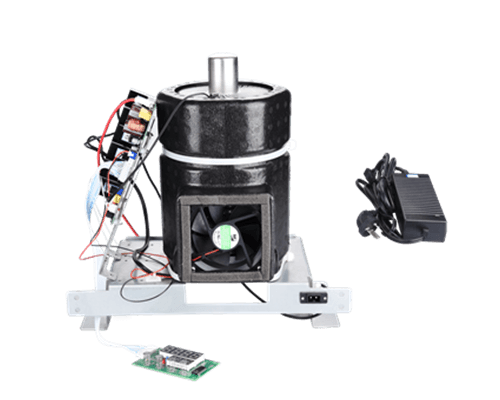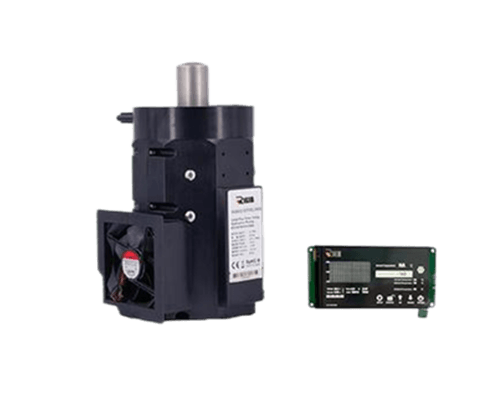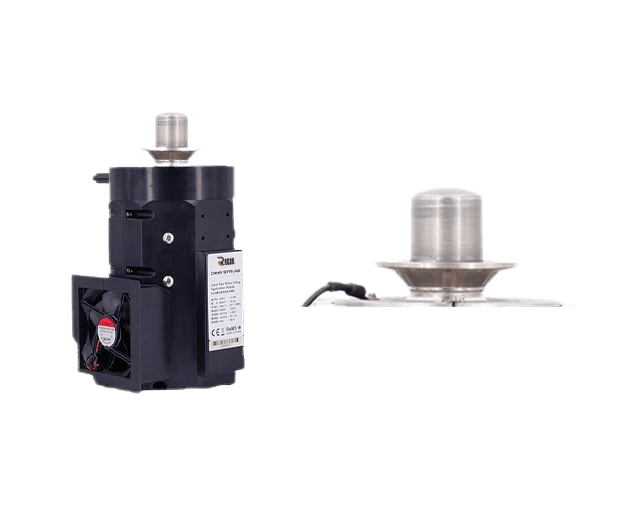
- Products
- Mini Compressor
- Air Conditioning
- Compact Liquid Chiller
- Compact Liquid Cooler
- Large Power Chiller
- Refrigeration Unit
- FPSC Stirling Cooler
- Application
- …
- Products
- Mini Compressor
- Air Conditioning
- Compact Liquid Chiller
- Compact Liquid Cooler
- Large Power Chiller
- Refrigeration Unit
- FPSC Stirling Cooler
- Application
- Products
- Mini Compressor
- Air Conditioning
- Compact Liquid Chiller
- Compact Liquid Cooler
- Large Power Chiller
- Refrigeration Unit
- FPSC Stirling Cooler
- Application
- …
- Products
- Mini Compressor
- Air Conditioning
- Compact Liquid Chiller
- Compact Liquid Cooler
- Large Power Chiller
- Refrigeration Unit
- FPSC Stirling Cooler
- Application

FPSC Cryocooler
Free Piston Stirling Cryocooler is a type of cooling system that doesn’t use a compressor. Instead, it cools by repeatedly compressing and expanding helium gas. Helium is a safe gas that doesn’t harm the environment. Arctic Active Cooling Cryocooler has been widely used in Bio-science, military, laboratory devices, analytical instruments and vaccines at low temperatures. The Sterling engine is a new technology for small and deep freezing, quickly reaching temperatures as low as -120℃ in just a few minutes.
- RS40
- RS80
- RS100
- RS100 Plus
Cryocooler: State-of-the-Art Fast and Deep Freezing!
RIGID, one of the leading Chinese companies in terms of innovation, has developed a Free Piston Stirling Cryocooler – FPSC. The Cryocooler brings the whole product to a new level, where it can save a lot of energy and greatly improve efficiency.
The FPSC Cryocooler has several advantages over refrigerated compressor systems. They can achieve very low temperatures -86℃ (Max -160℃), have no moving parts except for the pistons, which reduces the risk of failure, and have a relatively high efficiency. They are used in a variety of applications, including Food, Cold chains, Laboratory Equipment, Automatic Devices, Petrochemicals & Oil, Scientific Research, Life Science, Medical Imaging, and the cooling of electronic components.
The RIGID Cryocooler is a cooling system that has only two moving parts. The Sterling unit has a stainless steel housing and all sensitive components are hermetically sealed inside. This means it costs less to maintain. PFSC continuously repeats gas compression and adiabatic expansion and uses natural helium gas as a refrigerant. Helium is a very safe gas. It is completely harmless to our environment.
Technical Data

Get in Touch
Reach out to us for inquiries, product information, or partnership opportunities
FPSC Stirling Mode

40W Stirling Cryocooler
Model: RS40
- Input power: 12V DC
- Working current: 6A
- Noise: ≤38dB
- Size: ODФ86mm x Length 260mm
- Temp Range in Cold Fin (Cold part): -100℃~ 0℃

80W Stirling Cryocooler
Model: RS80
- Input power: 24V DC
- Working current: 6A
- Noise: ≤48dB
- Size: ODФ86mm x Length 270mm
- Temp Range in Cold Fin (Cold part): -120℃~ 0℃

100W Stirling Cryocooler
Model: RS100
- Input power: 24V DC
- Working current: 6A
- Noise: ≤48dB
- External Size: 132×132x336mm(LxWxH)
- Temp Range in Cold Fin (Cold part): -150℃~ 0℃
(No KF50 vacuum flange)

100W Plus Stirling Cryocooler
Model: RS100 Plus
- Input power: 24V DC
- Working current: 6A
- Noise: ≤48dB
- External Size: 167× 156 x 291mm (LxWxH)
- Temp Range in Cold Fin (Cold part): -160℃~ 0℃
(Included KF50 vacuum flange)
Advantage
High Capacity
Miniature Size
High Efficiency
High Reliability
Low Weight
Low noise
Application
Application Examples
Free Piston Stirling Cryocoolers are complete CFC-free systems, using natural Helium gas. They are small, portable, and are widely used for precise temperature control for under -160℃ max. The default version of Stirling coolers includes pistons, heat exchangers, and compression spaces. But we see technological advancements in all industries, such as Biotech, Pharmaceutical, Food, Energy, Chemical, Medical, Bio-Science, logistics, and Metrology.

Working Process
Isovolumetric Exothermic Process
Both pistons move in the same direction at the same time and the volume of gas remains constant until the compression piston reaches its dead center. As the gas passes through the regenerator, the heat is transferred to the packing, the temperature is reduced, and the pressure is also reduced.Isothermal Compression
The compression piston moves while the expansion piston does not. Gas is isothermally compressed, compression heat is transferred through the cooler to the coolant (water or air), the temperature is maintained, pressure is increased, and volume is decreased.Isothermal Expansion Process
The compression piston stops at the stop point while the expansion piston continues to move to the stop point. The gas is isothermally expanded and absorbs a certain amount of heat (cooling capacity) from the low-temperature heat source (cooling object) through the cold heat exchanger. The volume increases and the pressure decreases.Constant Volume Heating Process
Both pistons move in the same direction at the same time to the stop point, the gas volume remains unchanged and returns to the starting position. As the gas passes through, it absorbs heat from the regenerator packing, and the temperature increases while the pressure increases.
Features
High Durability By Linear Motor
RIGID Free Piston Stirling Cryocooler includes two pistons (pistons and balancing float) in the top compression chamber. The piston is driven by a linear motor, which sends helium gas to the balancing float (80 Hz).
High Precision Controller By RIGID Tech
Free Piston Stirling Cryocooler comes with a main drive board and display controller. Supports wide range control and accuracy to ±1°C. RIGID Stirling Cryocooler, drive board, temperature control, and fan are integrated into one unit.
Eco-friendly Coolant By Using Helium
No Oil, No CFC. MagLev technology. It is a new type of completely CFC-free, high- efficiency, energy-saving, and environmental-protection Cooler, which uses a small amount of helium as the coolant.
E-shop
Sample products are available from our online store.
Your order will be proceeded in 24hrs and delivered by DHL/UPS/FedEx.

SINGAPORE ©2024 - ARCTIC TECH PTE LTD. ACTIVE COOLING
Address: #50 Gambas Crescent 10-35 Proxima Gambas 757022 Singapore.
Arctic Active Cooling.







